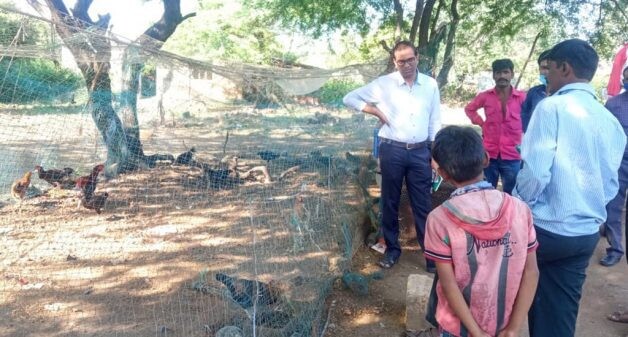
Leveraging climate action to help rural poor
If climate change mitigation uses decentralised, community-centric programs, it could transform the lives of India’s most marginalised rural poor.

If climate change mitigation uses decentralised, community-centric programs, it could transform the lives of India’s most marginalised rural poor.
Most agree the world needs to take action to reduce climate change. But few realise that doing so can also help improve the quality of life of India’s most marginalised rural communities living in extreme poverty.
But decentralisation is key.
Local approaches can improve a wide range of quality-of-life indicators, such as immediate living environment, health and nutrition, reduction in drudgery, income enhancement, gender equity, resilient communities and employment opportunities in the local vicinities.
Let’s imagine real, practical outcomes from some of the best-known mitigation measures for improving the quality of life of marginalised communities. This can happen if implemented at the local level and in an integrated manner.
Living environment
It’s well known that the poorest rural communities live in hilly and degraded landscapes around the world.
Take the Central Indian Tribal Belt, a popular term to define India’s tribal communities. Dried up water streams, thin tree cover, reduced diversity of wild species, dust storms and a high level of soil erosions are among the common features in these settlements. Droughts and increased heat waves have further deteriorated the living conditions of these communities.
But if these landscapes were comprehensively rehabilitated through mitigation measures – like improved and diversified tree cover, rejuvenated grasslands, soil conservation activities, land stabilisation, rehabilitation of water bodies and better waste management – they could come back to life and become more liveable and more fruitful for the poorest communities.
Who knows, if such changes were to happen, maybe future generations would want to stay in these refreshed settlements rather than migrate to crowded cities?
Health and nutrition
Crop diversity is another way to mitigate climate change – by putting farmland to better and more sustainable use.

Malnutrition is one of the most persistent development challenges in the remote communities. This is in part due to mono-cropping, indiscriminate use of hazardous chemicals and vanishing millets from cropping systems, which are now the norms in even the remotest villages.
But a diverse variety of nutritious food, cultivated at the local farms using sustainable practices, can improve people’s nutrition and health. Natural food without chemicals can also reduce risks of several life-threatening diseases. Local production and consumption of millets improves the diet and health of mothers and children.
Even the livestock needs better nutrition. Improving the feed management of dairy animals improves milk productivity, never mind reducing methane emissions. This means more milk is available for people, providing a vital source of nutrients for malnourished communities.
Drudgery reduction
Farmers working through dark winter nights to irrigate their crops is a common site across India. This is because a large number of them are at the mercy of unreliable power supplies from the electricity grids and often rely on diesel pumps.

This unreliable power and arranging fuel to operate water pumps, which often break down, cause a great amount of drudgery for farming communities.
If irrigation pumps were replaced by solar-powered irrigation pumps, it would not only help reduce a large amount of greenhouse gas emissions, but would also help ease the drudgery of being a farmer.
Gender equity
Rural women have suffered a lot due to the degradation of natural resources. In recent years, there has also been a huge increase in women working in agriculture, meaning they are burdened by both domestic chores and farming conditions.
Women spend a lot of time collecting fuel woods, water and grasses. Smoke from the traditional cooking stoves affects their eyes and lungs.

Rehabilitating natural resources could reduce drudgery for women, while harnessing solar energy – for more than just lighting – could create new economic opportunities for rural women.
Knock-on effects in individual income and community spirit
Making such changes – as well as other ideas, like using solar cold storage, more IT and even inviting eco-tourism into an area – could also provide more livelihood opportunities to rural communities, particularly for younger people.
These climate change mitigation activities also can be a great way to reignite a sense of community as people would need to come together to plan, implement and resolve conflicts while undertaking the initiatives.
If we are to transform the quality of lives of India’s most marginalised, then a long term, integrated, community-centric climate change plan is needed. An action plan where remote rural communities can be the drivers of change, rather than just the beneficiaries of ambitious climate change targets.
Doing so will ensure that rural communities are economically, as well as socially, more resilient in the uncertain future.
Naveen Kumar Patidar is Chief Operations Officer at the Aga Khan Rural Support Programme (India).